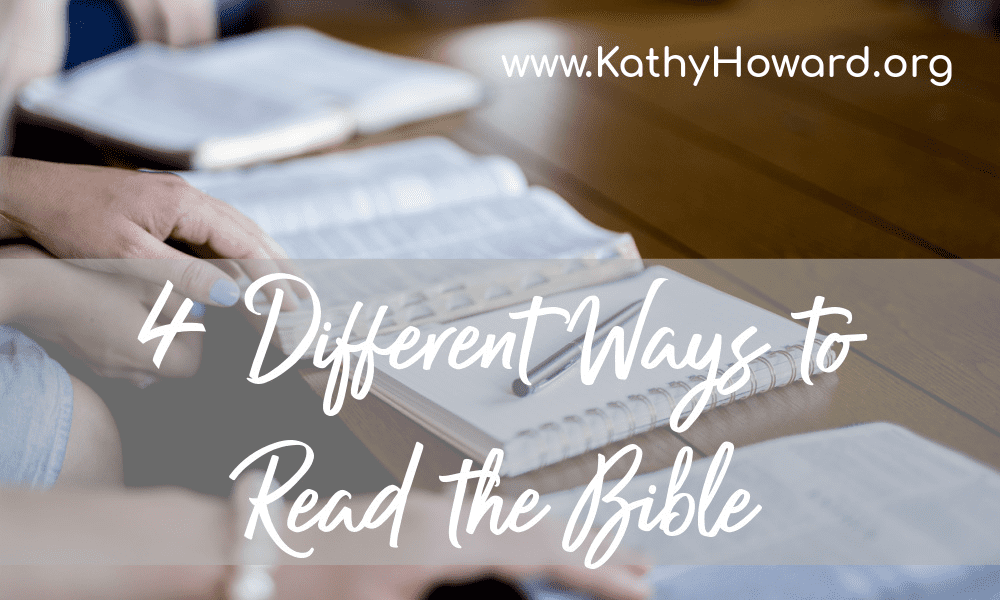
Why have a post on “ways to read the Bible?” Approaching the Bible for the first time – or the thousandth time – can be overwhelming for many of us. According to the 2022 “State of the Bible” report by the American Bible Society, almost 25% of Americans don’t read the Bible because they “don’t know where to start.”
I long to help more and more women get into and understand the Bible for themselves. So, hopefully ideas for different ways to read the Bible will be helpful. Sometimes we just need some direction getting started!
4 Ways to Read the Bible
- Read it through from cover to cover – Some people commit to read the Bible through in a certain time frame. They begin at Genesis 1:1 and keep going until they get to Revelation 22:21. I have done it several times over the course of a year. Some industrious people do it in 3 months, but that would be really flying! Some people do this every year. If you’ve never done this before, I encourage you to try it at least once. Reading the Bible all the way through helps us grasp the Big Story (Meta-Narrative) of Scripture. But unless you do it over a period longer than a year, the pace is too fast to be able to linger and digest smaller portions. (Here’s a one-year plan for reading through the Bible.)
- Use a Chronological plan – The books of the Bible are arranged by category or topic, not necessarily in the order things happened in time. (See “Why are the Books the Bible Placed in a Particular Order?”) If you want to get a good overview of the history of God’s dealing with mankind, a chronological reading plan will help. Since some books cover the same events from a different perspective (like 4 Gospels), this reading plan doesn’t use every book and chapter of the Bible. So, it’s a little less time-consuming than the whole Bible plan.
- One Bible Book at a Time – This is the method I’ve been using for the last 4 or 5 years. First I do my homework on the background of the book to set the proper context. Facts like author, recipients, historical and cultural setting all aid our understanding of the original meaning. A good study Bible, Bible dictionary, or online tools like Biblegateway.com can help. (See “4 Things to Consider for Biblical Context.”) Then I read through the Bible book at a pace that allows me to really chew on what I’m reading. (See “The 4 R Bible Study Method for Everyday Use” for how I dig into a passage.) This is the method I use with the daily Bible reading group on Facebook for women, “Reading the Bible Together.” We will be finishing Judges and starting Luke soon. Join us!
- Topical plan – Sometimes God leads us to dive deep into a particular topic, theme, or Bible character. You can find lots of topical plans online and I have some on my resources page. Or, you can develop your own by looking up your topic or character in a Bible concordance! Word of caution: Make sure you use good study skills and don’t pull small portions of Scripture out of context.
Final Thoughts
There is no one right way to read the Bible. And the four ideas above is not an exhaustive list. I do encourage you to use good, solid Bible reading/study tools and methods. (The 4 R Bible Study Method is a simple, but solid study method.) Overall, the most important thing is that we read it! God wants us to know Him and the Bible is His revelation of Himself to us!


I enjoy reading through the teaching of “The fruit of the Spirit “. More explicitly and understanding. Thanks